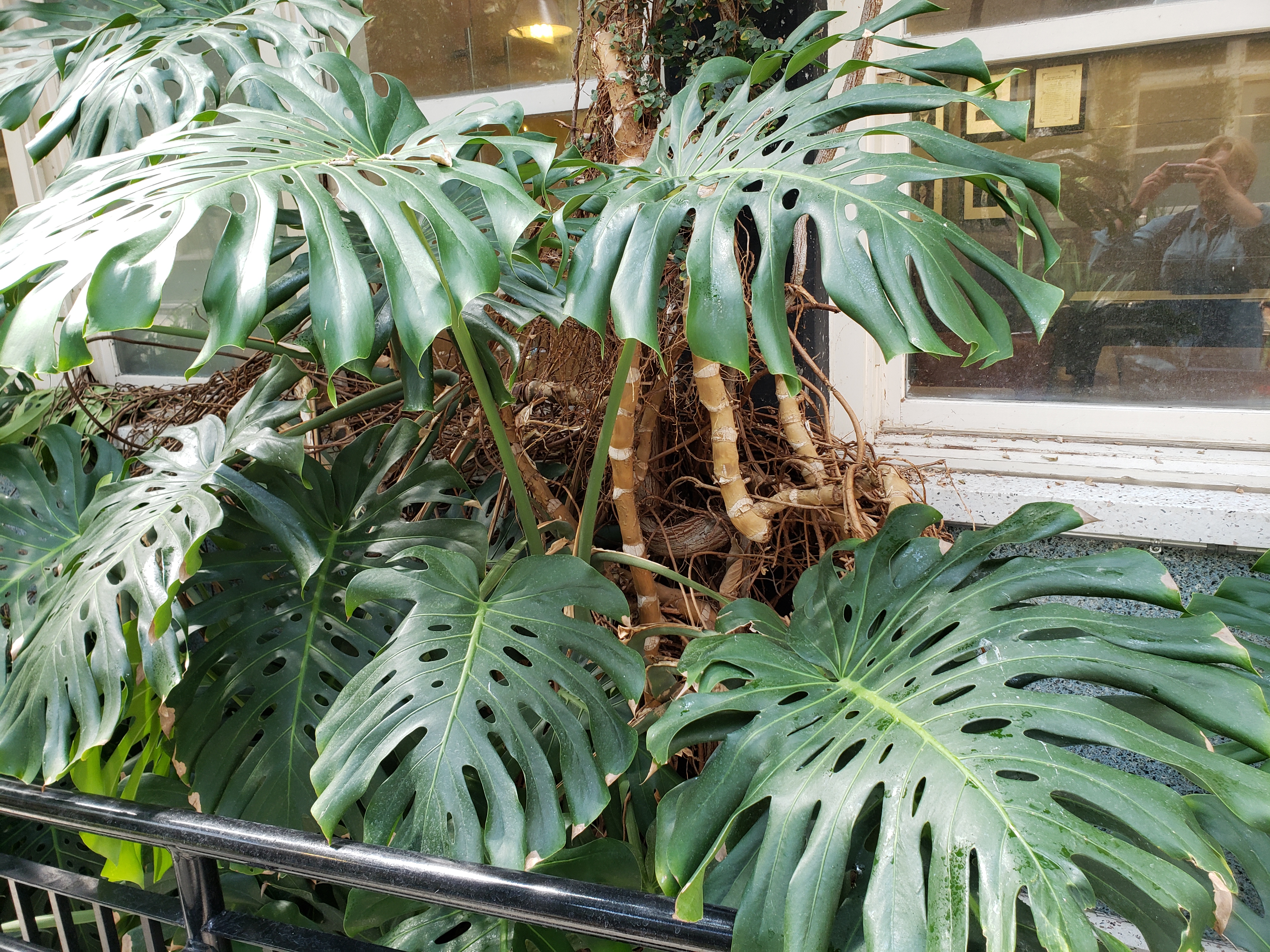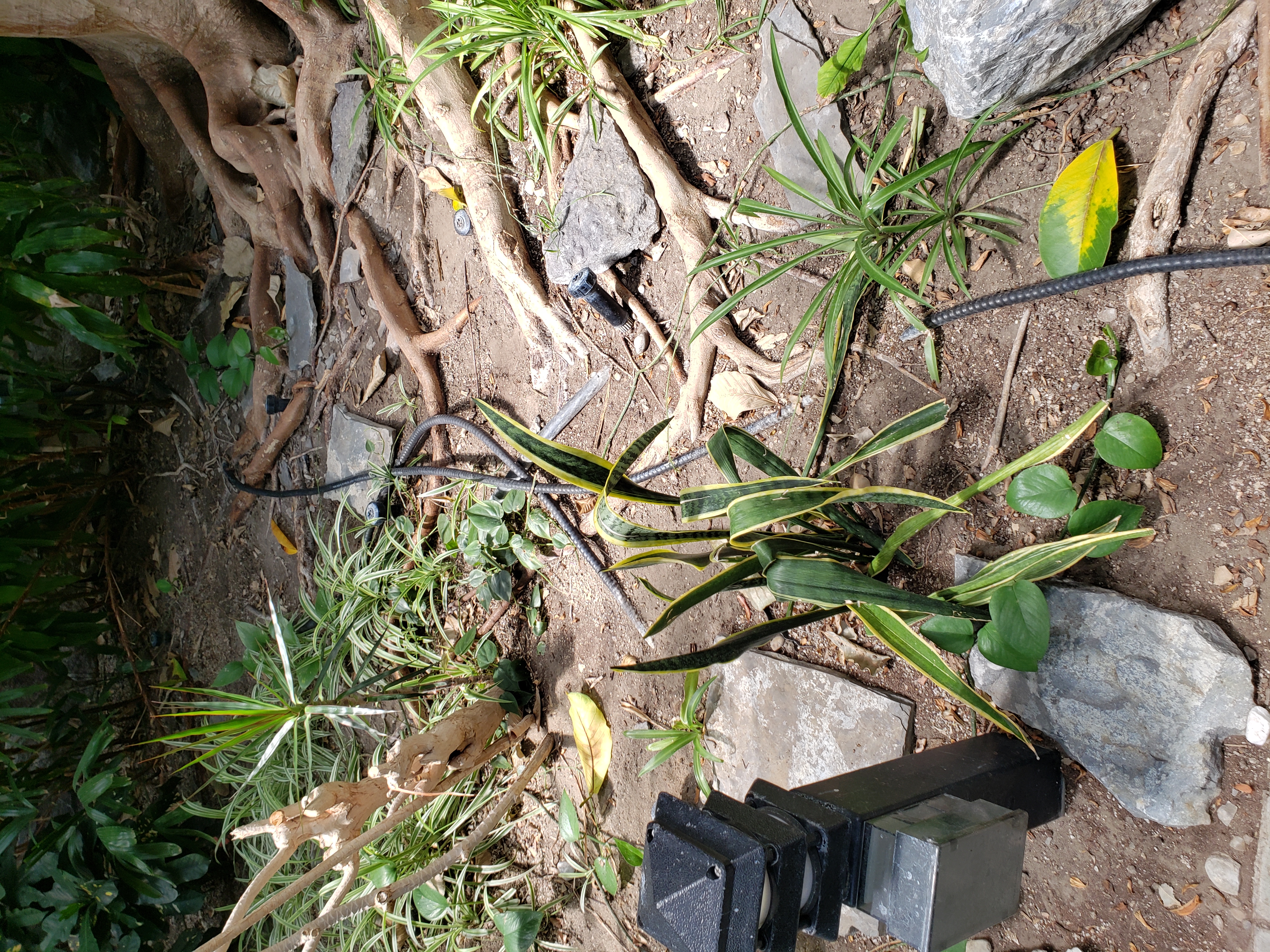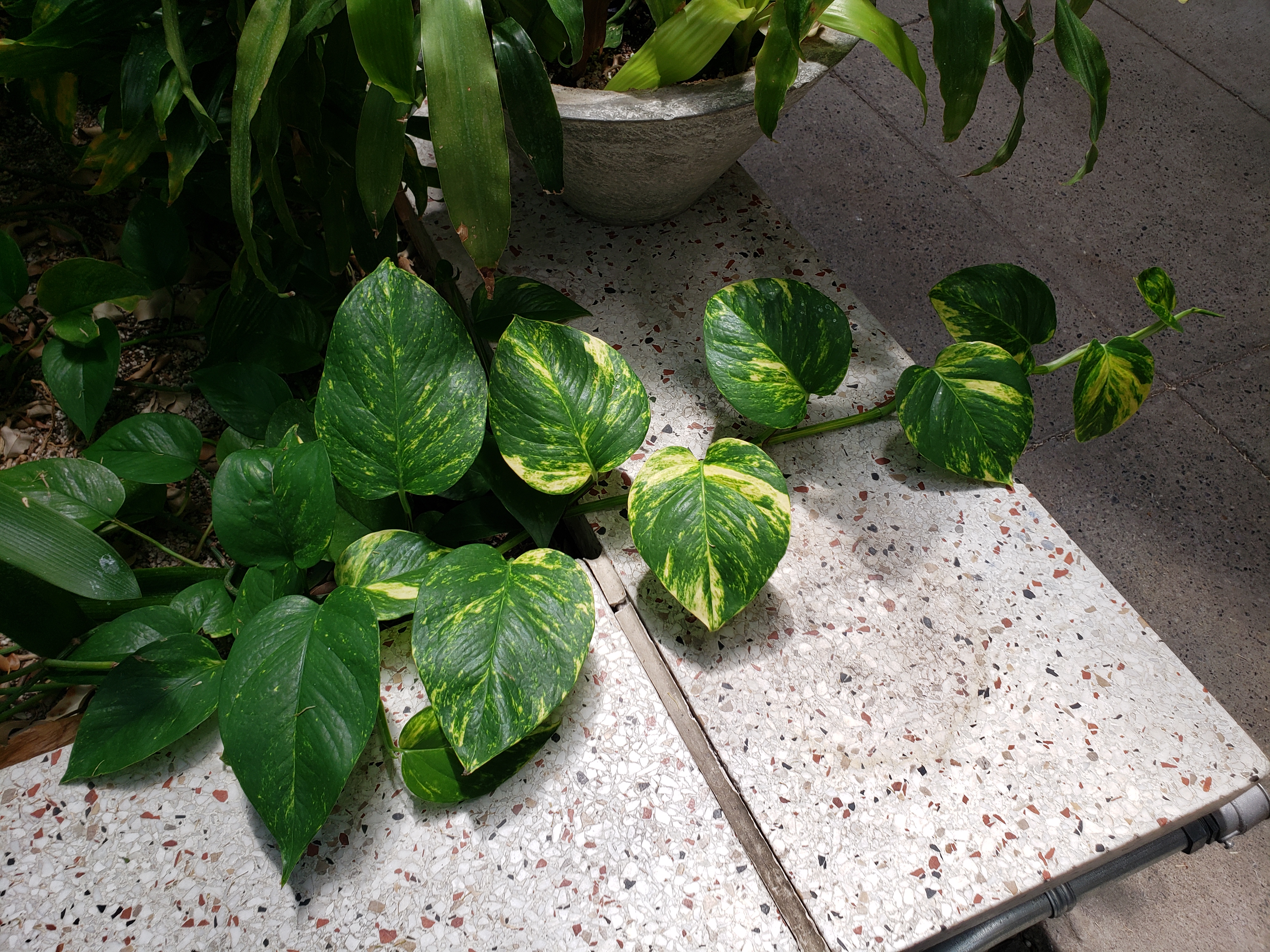This indoor garden in located inside of the Administration Building!
Unfortunately, it is not open to the public and is strictly for research purposes

Learn more about this building!


They are evergreen vines, growing to heights of 20 metres (66 ft) in trees, climbing by means of aerial roots which act as hooks over branches; these roots will also grow into the soil to help support the plant. Since plants in the genus root both into the soil and over trees, it is considered a hemiepiphyte with roots in soil but climbing on trees.[4] Aerial roots hanging directly to the ground have, according to Madison, measured up to 30 m (98 ft) long. The leaves are alternate, leathery, dark green, very large, from 25–90 centimetres (9.8–35.4 in) long (up to 300 centimetres (120 in) long in M. gigas) and 15–75 centimetres (5.9–29.5 in) broad, often with holes in the leaf blade. The fenestrated leaves allow for the leaves to spread over greater area to increase sunlight exposure, and to allow light to reach other leaves below, by using less energy to produce and maintain the leaves.[7] The flowers are borne on a specialized inflorescence called a spadix, 5–95 centimetres (2.0–37.4 in) long; the fruit is a cluster of berries, with significant variation in color, edible in some species.
Region/Country of Origin:

It is an evergreen perennial plant forming dense strands, spreading by way of its creeping rhizome, which is sometimes above ground, sometimes underground. Its stiff leaves grow vertically from a basal rosette. Mature leaves are dark green with light gray-green cross-banding and usually range from 70–90 centimetres (2.3–3.0 ft) long and 5–6 centimetres (2.0–2.4 in) wide, though it can reach heights above 2 m (6 ft) in optimal conditions.[3] The specific epithet trifasciata means "with three bundles".[4] The plant exchanges oxygen and carbon dioxide using the crassulacean acid metabolism process, which allows them to withstand drought. The microscopic pores on the plant's leaves, called the stomata and used to exchange gases, are opened only at night to prevent water from escaping via evaporation in the hot sun. To get this plant to go into bloom outside of its natural environment is difficult. Replicating its natural environment is possible. Its flowers vary from greenish white to cream-colored — some are fragrant at night, others not at all — and have a sticky texture.
Region/Country of Origin:

Epipremnum aureum is an evergreen vine growing to 20 m (66 ft) tall, with stems up to 4 cm (2 in) in diameter, climbing using aerial roots which adhere to surfaces. The leaves are alternate, heart-shaped, entire on juvenile plants, but irregularly pinnatifid on mature plants, up to 100 cm (39 in) long and 45 cm (18 in) broad; juvenile leaves are much smaller, typically under 20 cm (8 in) long. Epipremnum aureum is a species in the arum family Araceae, native to Mo'orea in the Society Islands of French Polynesia.[1] The species is a popular houseplant in temperate regions but has also become naturalised in tropical and sub-tropical forests worldwide, including northern South Africa,[2] Australia, Southeast Asia, Indian subcontinent, the Pacific Islands and the West Indies, where it has caused severe ecological damage in some cases. https://en.wikipedia.org/wiki/Epipremnum_aureum
Region/Country of Origin: